On arrival at Ivato (Antananarivo) Airport, you are met and transferred to your hotel in Tana. On your way you will see rice paddies, and a colourful patch-work of houses. Plus all the daily life in this city of about 2 million inhabitants. Tananarivians mostly live from day to day jobs. This is called “Ady Gasy”: tires repairing, selling Chinese-made products in the streets, selling scrap.
Antananarivo
Tana, (as the capital city of Madagascar, Antananarivo, is conveniently called) is a brightly coloured mélange of French colonial architecture, multistoried houses and narrow alleys.
Tana must have been a beautiful city at one time. Today, the city is quite often a shock to first time visitors - throngs of people, buildings in a state of decay, street urchins, hooting and belching old French cars and the lively hustle and bustle of the street markets, all combine to make Antananarivo (Tana) a bit overwhelming at first. But Tana is quite a fascinating city to explore. The city sprawls over several hills with lots of narrow houses, cobblestone streets and stone staircases linking one street to another. Each street seems lined with traders and the array of merchandise on offer in the stalls and markets is in a class of its own. With Malagasy embroidery, semi-precious stones and local crafts all jumbled up together.
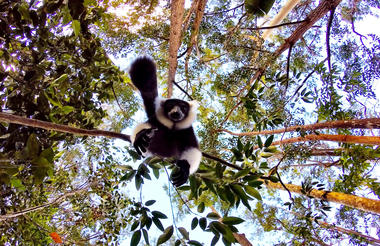
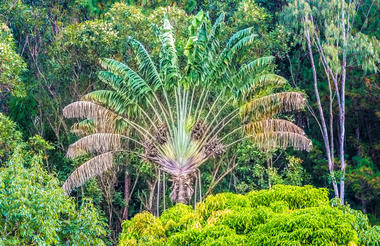
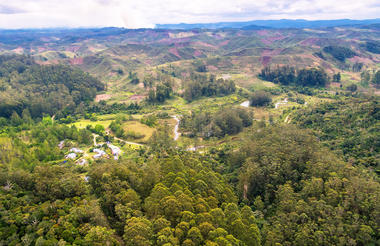
You are collected by your guide and drive to the Eastern Rainforests and Andasibe. This scenic transfer takes approx 3-3½ hours on a good but winding road with picturesque scenery en route. Along the way there are lovely views of rice paddies and the unique red-bricked houses of the Merina people, the dominant culture in this region.
You have the rest of the day to explore the forests at your own leisure. From late August to March you may be able to join an optional night walk into the park to see the nocturnal lemur species and tenrecs amongst others.
The eastern rainforests Andasibe National Park in Madagascar are a must-see on any Madagascar lemur safari. The tropical montane rainforest of Madagascar is one of the densest in the world and its floral diversity is particularly rich. A big part of that attraction is the appeal of the Indri lemurs which have their own special protected part of the Andasibe park.
You spend the next couple of days enjoying guided walks in the two main areas of the park.
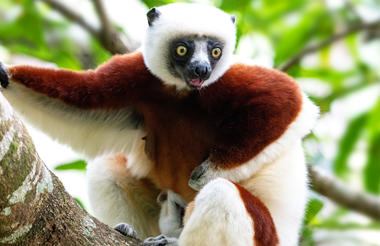

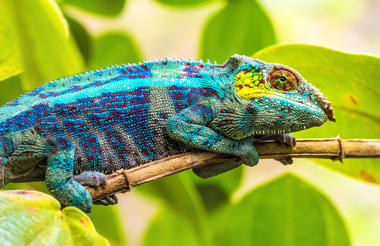
We recommend taking the very early morning walk into the most accessible part of Andasibe National Park, the Indri Special Reserve to see the lemurs whilst they are most active.
The Indri Perinet Special Reserve protects the largest of all the lemurs, the Indri. Standing about a metre high, with a stump for a tail, black-and-white markings and a beguilingly startled expression, the Indri looks more like a bizarre panda than a lemur. You will see them relatively easily, even if you stay on the marked trails, but for longer sightings you must scramble after them through the forest, craning up to exclaim as they execute balletic leaps from tree to tree. Their long back legs are immensely powerful, and an indri can propel itself 10 metres (30ft), executing a turn in mid-air, to grab a new tree and then gaze down benevolently at you!
Walking through the rainforest, as its distinctive siren-like calls emanate from the mist-covered canopy is one of the most memorable experiences of your Madagascar lemur safari. As well as the amazing Indri you may also see the Eastern grey bamboo lemur, red-fronted brown lemur as well as impressive reptiles like Malagasy tree boa and two foot long Parson’s chameleon. You might even be fortunate to see the giraffe-necked Weevil or the golden Mantilla frog.
After lunch (for your own account), you return to Tana in the afternoon.
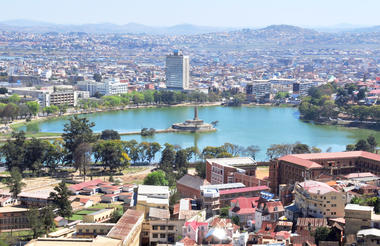
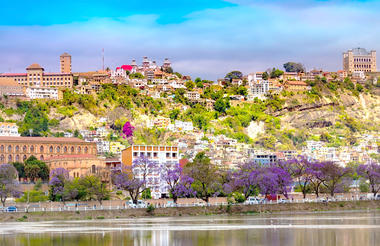
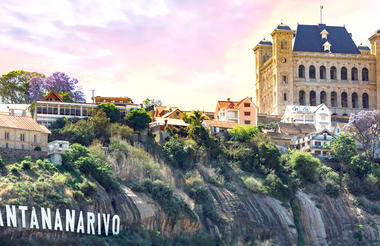
Today you have a road transfer back to Ivato Airport and take the scheduled 2 hour flight from Tana to Diego Suarez in the far north. On arrival, you are transferred to your hotel.
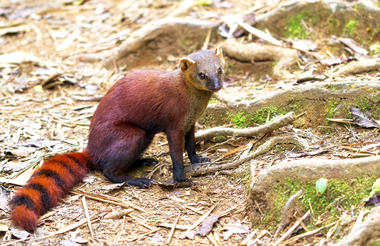
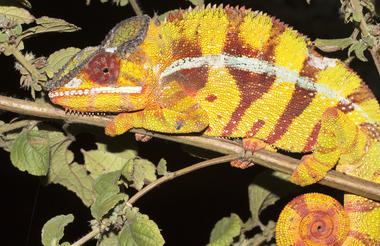
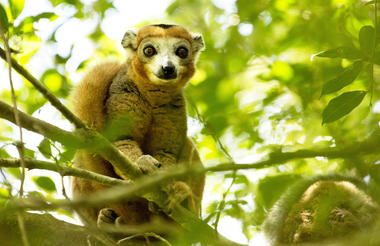
Explore the Amber Mountain Nature Reserve
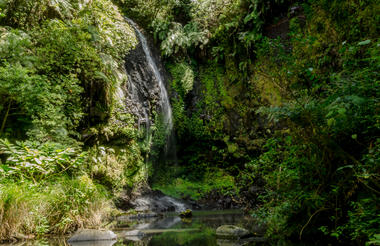

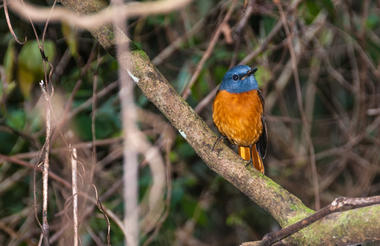
Today you head 45 minutes south from Diego (40km) passing through Joffreville, a French colonial town with some dilapidated colonial buildings and a relaxed ambience, and then to Amber Mountain.
It is one of the most visitor-friendly of all the protected areas of Madagascar, with broad walking trails, lush montane forest, picturesque crater lakes, spectacular waterfalls and a comfortable climate (cool and fresh).
You join a local guide for a lovely walking trail to the Sacred mountain waterfall with numerous giant trees, ferns and species of orchid. Mammals that can be seen here include the Sanford’s lemur, the crowned lemur, Rufous mouse lemur and the Amber Mountain fork-marked lemur. But you can add leaf-mimic chameleons, leaf-tailed geckos, frogs, butterflies and the very illusive aye-aye to that list. Birdwatching is also very rewarding in the Amber Mountain National Park. T
In the early afternoon, you continue to Ankarana (3-4 hour drive, 145km)
On Day 7 you visit the strikingly different Ankarana National Park for a full day of exploration.
Ankarana National Park
The dry, deciduous Ankarana is a really spectacular, bizarre area of natural beauty. The Ankarana reserve is a limestone massif (plateau) surrounded by formidable cliffs and marvelously impressive fields of razor sharp pinnacles which are called tsingy. These are ancient corals which have been sculptured by erosion.
You explore the park on foot to look for lemurs, chameleons and of course the famous limestone tsingy. Underneath the Tsingy are miles of caves, passages and rivers, where one can find crocodiles and blind fish. Some of the largest caves have collapsed, forming isolated pockets of river-fed forest with their own perfectly protected flora and fauna such as Crowned and Sanford’s brown lemur as well as the fossa, one of Madagascar’s few carnivores, the striped civet and ring-tailed mongoose.
There’s a choice of trails from easy to more challenging. A highlight is the famous heart-raising rope bridge across one of the larger canyons.
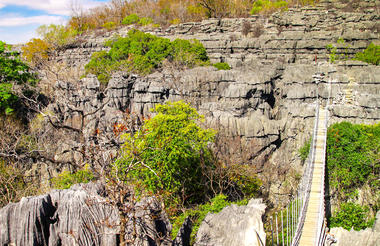
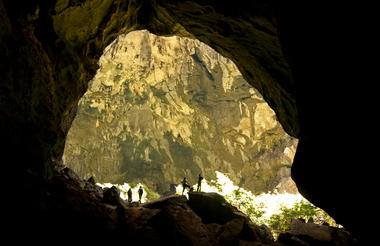
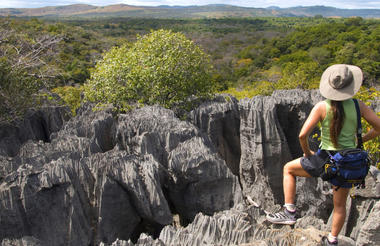
Today you set off after breakfast and continue south. This 3 hour drive is magnificent through the most fertile land of Madagascar. Drive past orchards of mangos and rows of palm trees as well as ylang ylang, vanilla and cocoa plantations. See how local villages cultivate cocoa, spices (vanilla, pepper, bay rose) and perfume plants (ylang ylang and patchouli) on large plantations. We pass to Ambilobe with its picturesque market.
You arrive at the small fishing village of Ankify which is also the main harbour access Nosy Be.
Here you catch an early afternoon boat transfer across to Nosy Be. On arrival you are transferred to your hotel.
Nosy Be Island
Nosy Be is the largest and best known of several beautiful, seductive islands off the north-west coast of Madagascar. This ‘Perfumed Isle’, as Nosy Be is known, offers lovely sandy beaches and a lush interior alive with the smells of vanilla, ylang-ylang and coffee.The climate is excellent with warm temperatures throughout the year and brief showers in the rainy summer season which are usually at night. More on Nosy Be.
The shallow beaches of Nosy Be are not ideal for serious swimming or snorkeling as the water stays shallow far out to sea, but all hotels have pools and snorkeling and diving excursions can be made to smaller islands with wonderful coral life such as Nosy Komba and Nosy Tanikely.



Today you are transferred back to Nosy Be airport. End of Services for price below
Note: There are now direct flights from Nosy Be to Johannesburg (but only once a week, currently on Sundays). So you may not need a final night back at Tana.
But if you are flying back to Europe, you'll probably have to add an extra night in Tana at the end. We will include this once we know about your flight plans...





